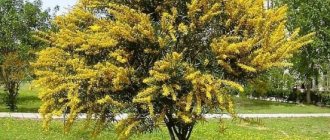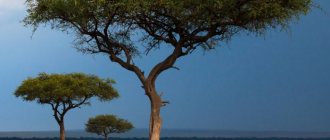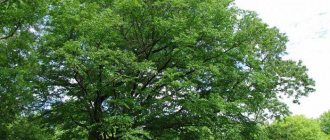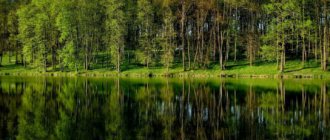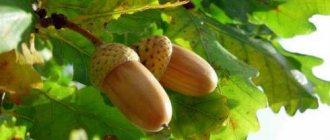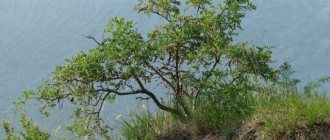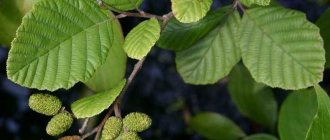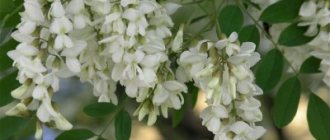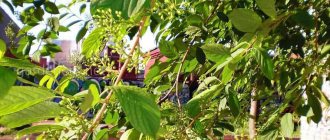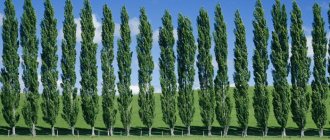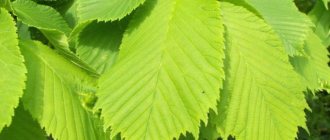A plant of incredible beauty that has an equally poetic name. One of the brightest representatives of the legume family, native to tropical latitudes. Tour operators often print picturesque photos of her to attract tourists. A plant that can feel equally good both in nature and at home. Lankaran acacia can rightfully be called the princess of the Albizia genus.
Silk acacia - what kind of tree is it?
Lankaran acacia (Albizia julibrissin) is the most decorative species of the Albizia genus with delicate pink flowers, for which it is often called silk. Albizia can often be found growing in open ground in the south of our country - the Black Sea coast of the Krasnodar Territory and in the Crimea. Therefore, it is no coincidence that the name Crimean or southern acacia is fixed in our language. Depending on growing conditions, it can take the form of a tree or shrub. This albizia can also be grown indoors, with proper care.
It owes its name to the Florentine del Albizzi, thanks to whom Europeans first learned about this plant. The second part of the name means “silk flower” in Farsi. In addition, silk acacia has many unofficial names: Chinese acacia, Turkish albizia, Persian silk tree, albizia, silk acacia and others. The homeland of albizia (where it comes from) is considered to be the area of Lenkoran in the south-east of Azerbaijan.
Albizia Lankaran is a deciduous tree, its height can reach 16 meters (on average - from 6 to 9). The crown of the plant is spreading, formed in the form of a huge openwork umbrella. The root system of silk acacia is well developed, but superficial. Because of this, the frost resistance of the silk tree is insignificant (it can withstand frosts down to minus 15 ° C for a short time), this is enough for growing on our Black Sea coast, but not enough for growing in open ground, for example, in the conditions of the Moscow region.
Albizia Lankaran - tall deciduous tree
The leaves of Lankaran albizia are unpaired, bipinnate, dark green on top and whitish on the underside. The central petiole contains from 9 to 15 lobes, which in turn contain about 30 pairs of crescent-shaped leaflets. In the evening and in hot weather, the leaves of silk acacia fold along the central petiole and droop. Because of this, Albizia Lankaran is sometimes called the “sleeping tree.”
Acacia flowers are yellowish, bisexual. The corolla is funnel-shaped, yellow-green in color, poorly defined. Long (about 3.5 cm), bright pink stamens protrude from the corolla. The corolla with stamens is located inside the bell-shaped calyx. Albizia Lankaran flowers are collected in fluffy spherical inflorescences. Flowering begins in July and continues until the end of August. This “silky acacia” blooms so impressively that it becomes a real event.
Albizia Lankaran flower formula: ♀♂ ↑Ч5Л1+2+(2)Т(9)+1П1
The fruits of silk acacia are elongated double-leaf beans, about 20 cm long. When ripe, the pods are dry, yellow or brown. In winter, Lankaran silk acacia sheds its leaves and goes into a dormant state.
The tree grows very quickly and, under favorable conditions, can live up to 100 years (on average, about 50). The plant is listed in the Red Book as an endangered species.
Albizia Lankaran flowering
In the nature of Russia, Lankaran silk acacia can only be found on the Black Sea coast. Crimea is especially famous for its alleys of albizia, for which it is often called the southern or Crimean acacia.
Spreading
In Europe, the unusual tree was recognized thanks to the Italian Filippo del Albizzi, who brought the bush from Constantinople. Acacia Lankaran silk has spread widely in many regions:
- East Asia - China, South Korea, Japan;
- Western Asia - Turkey, Iran, Azerbaijan;
- countries of the Indian subcontinent.
Many consider the town of Lankaran in Azerbaijan to be the birthplace of albizia. Hot climate, dried deserts, wet soils, rocky slopes - the unpretentious beauty takes root everywhere.
The main condition for growth is a warm climate; soil characteristics are not so significant.
The heat-loving plant adorns public gardens, parks, and open street spaces. Urban areas are decorated with a lush crown and cultivated in outdoor recreation areas. Entire alleys are created from Lankaran acacias in Crimea, Armenia, Georgia, and Ukraine.
Silk tree in landscape design
Albizia Lankaran is a southern plant with poor winter hardiness, so when creating landscape compositions, this important factor must be taken into account.
Since silk albizia looks luxurious both as a single tree and next to other plants, this is successfully played up by landscape design masters. It will fit perfectly both in the garden plot and on the city alley. Due to the fact that the leaves of Lankaran acacia transmit the sun's rays, light-loving plants can be planted under it. And in combination with a swing or a picnic table, a silk tree will fill the garden with romance, tenderness and comfort.
Tunnel alleys look especially advantageous in the urban landscape. To do this, Lankaran acacia is planted on both sides of the path or path. The older the plants become, the more they spread their crowns over the path, forming a green tunnel.
Lankaran acacia planting and care
There are several ways to grow silk albizia at home:
- from seeds;
- cuttings;
- transplanting root shoots.
It is recommended to start growing Lankaran albizia from seeds in the fall. It is believed that at this time of year its seeds have a higher germination rate. Before planting, seeds need stratification. To do this, they are placed in warm water until they swell. After this, the seed material is planted in a substrate made of a mixture of sand and peat. The first shoots appear a few months after planting. At this time, it is necessary to maintain the temperature above 20 degrees and prevent the soil from drying out.
Albizia seeds
When propagating Lenkoran acacia by cuttings, you need to take half-lignified cuttings from the side shoots. It is recommended to carry out the cutting cuttings procedure at the beginning of summer. The length of the cutting can be 10-15 cm. Next, the cut shoots are planted in a sandy-peat substrate. It is recommended to remove the seedlings to a cool place and, after rooting, plant them in separate containers.
Root shoots can be propagated if you plan to grow the plant in open ground. In this case, part of the root shoots of the parent tree is taken and transplanted to another place.
When growing albizia in open ground, you should remember that the plant is light-loving and will not tolerate shading neighbors near it. She also loves moist soils, but can tolerate drought for some time. It tolerates sanitary pruning of dead shoots very well.
Albizia seed sprout
The southern beauty may not be able to withstand the harsh winter conditions of the Moscow region. Frost below -18 °C is already destructive for the silk tree, although isolated cases of plant acclimatization are known in central Russia and even in Siberia. A good option for open ground would be to trim young shoots and wrap the root collar. And even so, there is no 100% guarantee that the plant will survive. The ideal option is to grow Albizia Lankaran in greenhouses or indoor conditions as an ornamental plant.
Reproduction
Sri Lankan acacia can be propagated in three ways:
- Growing from seeds. Sow the seeds at the end of February and prepare the soil mixture. It is recommended to mix three parts turf soil, two parts peat and one part sand. The inner surface of the container should be treated with a solution of potassium permanganate. Then the soil should be treated with steam. To do this, place it in cheesecloth and then in a colander, which should be placed over a pan of water. Water should be boiled for at least 20 minutes. The seeds should be lightly germinated and soaked in water at room temperature for several days. Prepared, sprouted seeds are placed in a container with soil to a depth of one centimeter and at a distance of about 6 cm from each other. The soil should be sprayed once a day using a sprayer. When the seedlings have their first two leaves, they are planted in separate containers.
- Saplings. The shoots should be young or single-toothed, from annual shoots of the previous year. Such a seedling is cut from the middle of the shoot. It should have 2-3 buds. The seedling can be planted without soaking, but it should be treated with a root formation stimulator. The soil for pots should be fertile, but not heavy. Rooting takes several months. Young green cuttings should be rooted in July, removing two-thirds of the leaf blades and treating them with a stimulant. It is necessary to monitor the moisture content in the soil. By September, most cuttings have taken root.
- Root shoots. Shoots sticking out of the ground can be cut off and planted separately, treated with a growth stimulant.
Disease and pest control
Silk Lankaran acacia has good immunity to various diseases and pests. In indoor and greenhouse conditions, it can occasionally suffer from spider mites and scale insects. When grown in open ground, it practically does not get sick (unless it freezes).
When a scale insect attacks, noticeable brown insect growths appear on the branches of albizia. Removing them so as not to harm the plant bark is quite difficult. It is best to use a sponge or cloth moistened with an insecticide.
When a spider mite invades, thin, barely noticeable cobwebs appear between the branches of albizia, and the leaves become covered with a white coating. If no measures are taken, the acacia leaves dry out and the plant begins to leaf out.
You can get rid of this pest not only with insecticidal preparations, but also with folk remedies. For example, use tobacco dust or spray the plant with infusions of garlic and onions.
Improper care can also cause silk tree disease:
- With a lack of moisture, dark spots appear on the tips of the leaves.
- With excessive watering, the root system suffers.
- If the earthen coma dries out, flowering may not occur.
- Insufficient lighting leads to a change in the color of the foliage, it becomes dull and faded.
- If the plant is in a draft, chlorotic spots appear on the leaves.
Possible difficulties during cultivation
Albizia are capricious and sensitive to changes in usual conditions. Excessive air dryness and insufficient moisture levels lead to paleness, early wilting of leaves and falling flowers. The reason may be excessive water hardness or the presence of lime salts in it.
Waterlogging of roots during watering causes them to rot . The development of rot is promoted by insufficiently loose heavy soil and lack of drainage. In such a situation, it is difficult to save a dying plant. You can try to restore it by rooting the remaining healthy shoots.
The appearance of dark spots on the leaves indicates an incorrect temperature regime: keeping the plant in a draft or in a cold room.
How to grow bonsai from Lankaran acacia
Since silk albizia responds well to formative pruning, you can try growing it in the form of a miniature tree - a bonsai.
First, you should decide on the shape of the future tree. In nature, albizia most often has a multi-stemmed form or powerful lateral branches on a short central trunk and an umbrella-shaped crown. But, due to the fact that acacia produces new stem buds well, you can choose any style of bonsai.
You can grow Albizia Lankaran bonsai using both cuttings and seeds. When growing you should remember:
- a container for growing bonsai should be small, ceramic, with large drainage holes;
- In no case should the lower branches be allowed to be shaded, otherwise they will die;
- It is best to trim the roots and crown after flowering;
- periodically you need to perform corrective pruning of the crown;
- winding with wire to give the branches shape should be done no more than once every two years and for no more than 4 months;
- When winding with wire, do not tighten it too much, as this can damage the plant bark;
- since acacia leaves have a complex shape and add decorative properties, their artificial removal does not give any effect and is therefore not used;
- Bonsai must be replanted every two years.
The most acceptable height of a miniature silk tree is about one meter.
This is how you can turn a silk Persian tree into a real work of art. This will add a southern flair and will be a great addition to any interior.
Acacia Lankaran - medicinal properties
Albizia Lankaran is a heat-loving honey-bearing tree or shrub (the form taken depends on the growing conditions), but unlike white acacia (Robinia), Albizia honey has a small distribution. It is not included in the lists of pharmacopoeial plants, but is often used as decoctions (teas) and tinctures in folk medicine for increased irritability, insomnia and arrhythmia, as well as for gastrointestinal disorders and inflammatory diseases of the skin.
Contraindications and warnings
Contraindications to the use of albizia as an alternative medicine may be:
- pregnancy;
- renal and liver failure;
- ischemic disease;
- stroke;
With caution - during lactation and for oral use in children under 12 years of age.
Other types of albizia
Albizia lophantha
Euonymus Winged, Fortune, European and other species
The plant is native to Australia. This variety is a bush or tree up to 5 meters high.
Albizia fasciculata
The leaves are double-pinnate, pubescent on the underside. The number of pairs of leaves in the first order is 8-10 pieces, in the second - 20-40. The flowers are yellow, 5-9 cm in size. They look like ears of corn. Blooms in the spring months.
Albizia adianthifolia
The natural range of the species is from Southern to Tropical Africa. Blooms naturally in winter or spring. The albizia tree reaches a height of 40 m.
Sandy soil is best suited for growing. Abundant watering and warm, moist air are preferred.
Flowers form large hemispheres. The petals are white or greenish-white. The fruits are thin pods.
The tree trunk is twisted and thorny. It has soft wood of golden yellow color.
Interesting! Traditional medicine uses Albizia bark to treat skin diseases, bronchi, headaches, sinusitis and as an anthelmintic. An extract from the roots of the tree is used to treat eye diseases.
In Africa, the tree is planted in eroded areas to preserve soil cover.
Albizia amara
Grows in the countries of Southern and Eastern Africa, India, Sri Lanka. The shrub reaches a height of up to 5 m. Like all albizia, it has a spreading crown and openwork leaves. The inflorescences look like heads with a diameter of 3-5 cm. The edge is orange. The beginning of flowering is May. The flowers have a pleasant aroma. Prefers sandy soil.
